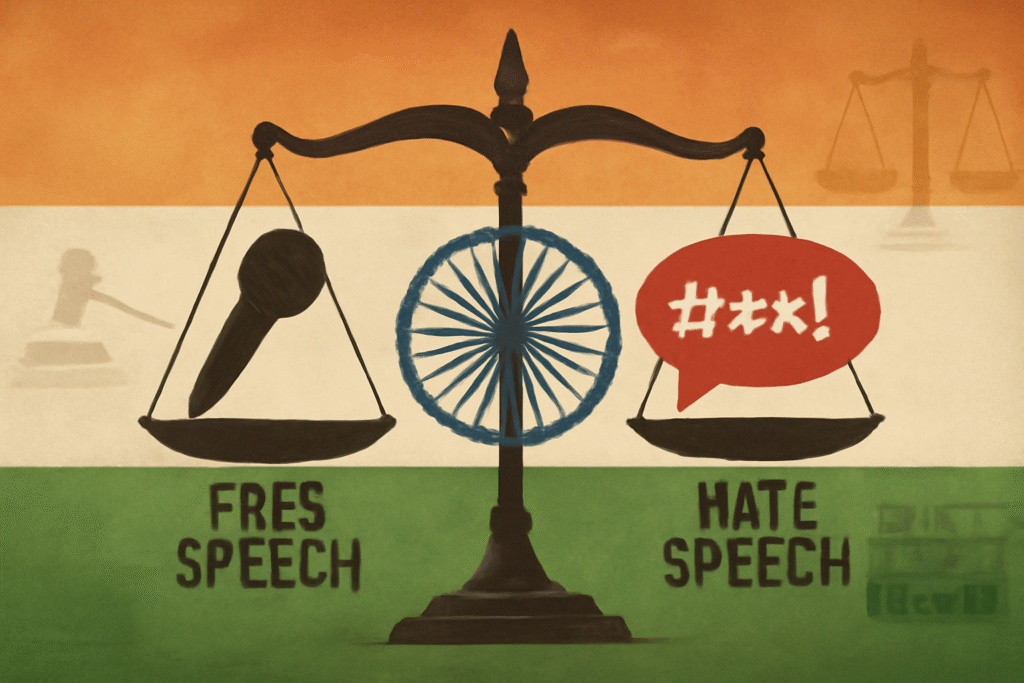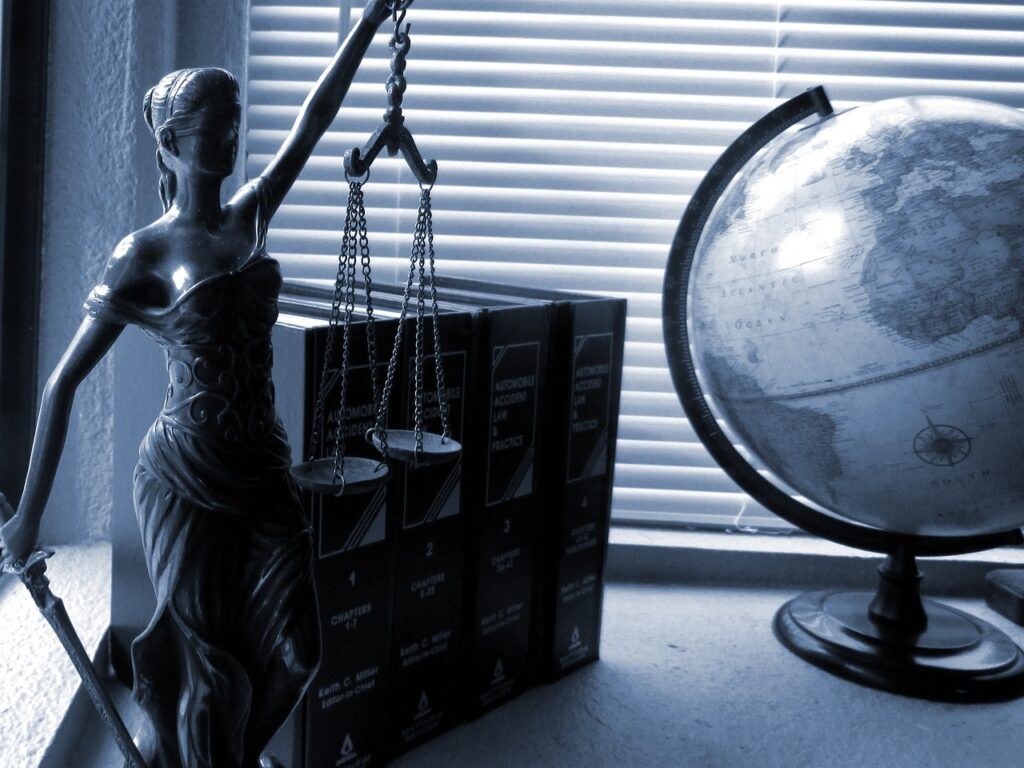Published on: 09th October 2025
Authored by: Janvi
Court: Supreme Court of India
Bench: Nine-Judge Constitution Bench
Date Decided: August 24, 2017
Introduction
Justice K.S. Puttaswamy (Retd.), a former judge of the Karnataka High Court, filed a writ petition under Article 32 of the Constitution of India challenging the constitutional validity of the Aadhaar scheme. The petition raised fundamental questions about whether privacy constitutes a fundamental right under the Constitution. Given the existence of conflicting precedents—particularly M.P. Sharma v. Satish Chandra[1], and Kharak Singh v. State of U.P.[2], both of which cast doubt on privacy as a fundamental right—the matter was referred to a nine-judge Constitution Bench. This referral underscored the constitutional significance of the question and the need to authoritatively settle the status of privacy in Indian jurisprudence.
Facts
The Aadhaar scheme, launched by the Government of India, required the collection of biometric and demographic data from residents of India. Petitioners argued that this mandatory data collection violated the right to privacy, which they contended was implicit in the fundamental rights guaranteed by the Constitution. The Union of India countered that the Constitution did not explicitly guarantee privacy as a fundamental right and relied on the previous Supreme Court judgments in M.P. Sharma and Kharak Singh to support its position.
Issues
The Supreme Court framed the following issues for consideration:
- Whether the right to privacy is a fundamental right under the Constitution of India.
- Whether the precedents in M.P. Sharma and Kharak Singh correctly interpreted the Constitution regarding privacy.
- If privacy is constitutionally protected, whether it exists as an independent fundamental right or arises from within existing guarantees such as the right to life and personal liberty under Article 21.
- What is the scope and content of the right to privacy, if recognized as a fundamental right.
- The nature and extent of the regulatory power of the state in relation to privacy.
Judgment
The Supreme Court unanimously held that the right to privacy is a fundamental right protected under Articles 14, 19, and 21 of the Constitution of India. The Court overruled M.P. Sharma and Kharak Singh to the extent that they denied the existence of a fundamental right to privacy.
Reasoning
The Court’s reasoning established several foundational principles:
Constitutional Basis: The Court held that privacy is an intrinsic part of life and personal liberty protected under Article 21 of Part III of the Constitution. Privacy is not merely a common law right but enjoys constitutional protection as a fundamental right.
Dimensions of Privacy: The Court recognized that privacy encompasses multiple dimensions, including bodily integrity, personal autonomy, informational self-determination, and dignity. This multifaceted understanding acknowledges that privacy protections must adapt to various contexts and technological developments.
Limitations on Privacy: The right to privacy is not absolute. The Court established that any restriction on privacy must satisfy a three-pronged test of legality, legitimate aim, and proportionality. This framework ensures that state interference with privacy is justified, necessary, and not excessive in relation to its objective.
Comparative Constitutional Analysis: The Court drew upon comparative constitutional law from jurisdictions including the United States, South Africa, and the European Union to inform its reasoning and demonstrate the global recognition of privacy as a fundamental right.
Protection of Minorities: The judgment clarified that majoritarian morality cannot override constitutional rights. Even minorities are entitled to the full protection of fundamental rights, including privacy, regardless of prevailing social attitudes.
Modern Privacy Concerns: The Court emphasized that privacy concerns in the digital age can arise from both state and non-state actors. Accordingly, claims of privacy violation lie against both governmental and private entities. The Court recognized that informational privacy in the internet age presents unique challenges, as individuals’ exercise of control over their personal data may itself lead to privacy vulnerabilities.
Evolution of Article 21: The Court noted that the scope of Article 21 has expanded over the years through consistent judicial interpretation, incorporating numerous rights within its protective ambit. This evolutionary approach allows constitutional protections to remain relevant in changing social and technological contexts.
The Triple Test for Privacy Intrusion
The Supreme Court declared that any incursion upon privacy by state or non-state actors must satisfy the following three-part test:
- Legality: The action must have a basis in law.
- Legitimate Aim: The action must pursue a legitimate state interest.
- Proportionality: The means employed must be proportionate to the objective sought to be achieved.
This framework provides a structured approach to balancing individual privacy rights against legitimate governmental and societal interests.
India’s Commitments Under International Law
The Court situated its decision within India’s broader commitment to international human rights norms. The recognition of privacy as a fundamental constitutional value aligns with India’s obligations under international law. Article 51 of the Constitution, part of the Directive Principles of State Policy, requires the State to “foster respect for international law and treaty obligations in the dealings of organised peoples with one another.” Article 12 of the Universal Declaration of Human Rights explicitly recognizes the right to privacy, and India’s constitutional interpretation reflects this global consensus on privacy as a fundamental human right.
Impact
Recognition of Fundamental Right: The most significant impact of this case was the formal recognition of the right to privacy as a fundamental right under the Constitution of India. This landmark decision resolved decades of uncertainty and established privacy as a cornerstone of constitutional rights.
Data Protection Framework: The ruling catalyzed the development of data protection laws in India. It highlighted the urgent need for comprehensive legislation to protect individuals’ personal data, particularly in the digital age where technological advances pose unprecedented threats to privacy.
Foundation for Subsequent Judgments: The Puttaswamy decision laid the groundwork for transformative subsequent judgments. Most notably, it provided the constitutional foundation for the decriminalization of homosexuality in Navtej Singh Johar v. Union of India, AIR 2018 SC 4321, (2018) 10 SCC 1, which held that LGBTQ+ rights are protected under the right to privacy. Similarly, the decision influenced Joseph Shine v. Union of India (2018), which struck down the criminalization of adultery, recognizing that privacy includes autonomy in intimate relationships.
Conclusion
The Supreme Court’s decision in Puttaswamy represents a watershed moment in Indian constitutional law. By recognizing privacy as a fundamental right, the Court protected individual autonomy against potential state overreach, even in the absence of a comprehensive statutory privacy framework. The judgment demonstrates the judiciary’s capacity to adapt constitutional interpretation to contemporary challenges posed by technological advancement and evolving social values. The decision has had far-reaching implications, serving as the constitutional bedrock for subsequent progressive judgments that have expanded individual freedoms and protected minority rights. The Puttaswamy decision stands as a testament to the Constitution’s enduring vitality and the Supreme Court’s role as guardian of fundamental rights in a rapidly changing world.
[1] AIR 1954 SC 300
[2] AIR 1963 SC 1295




